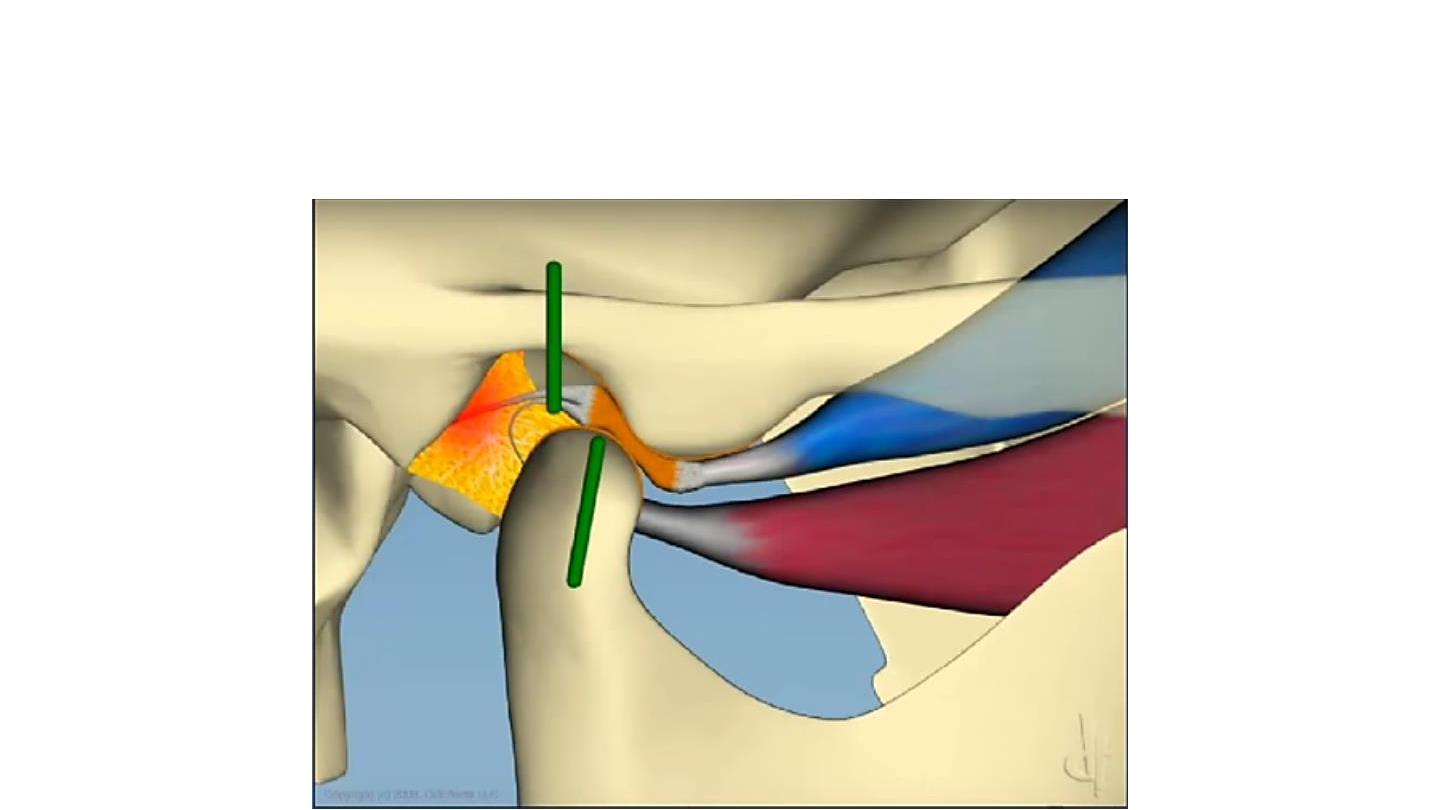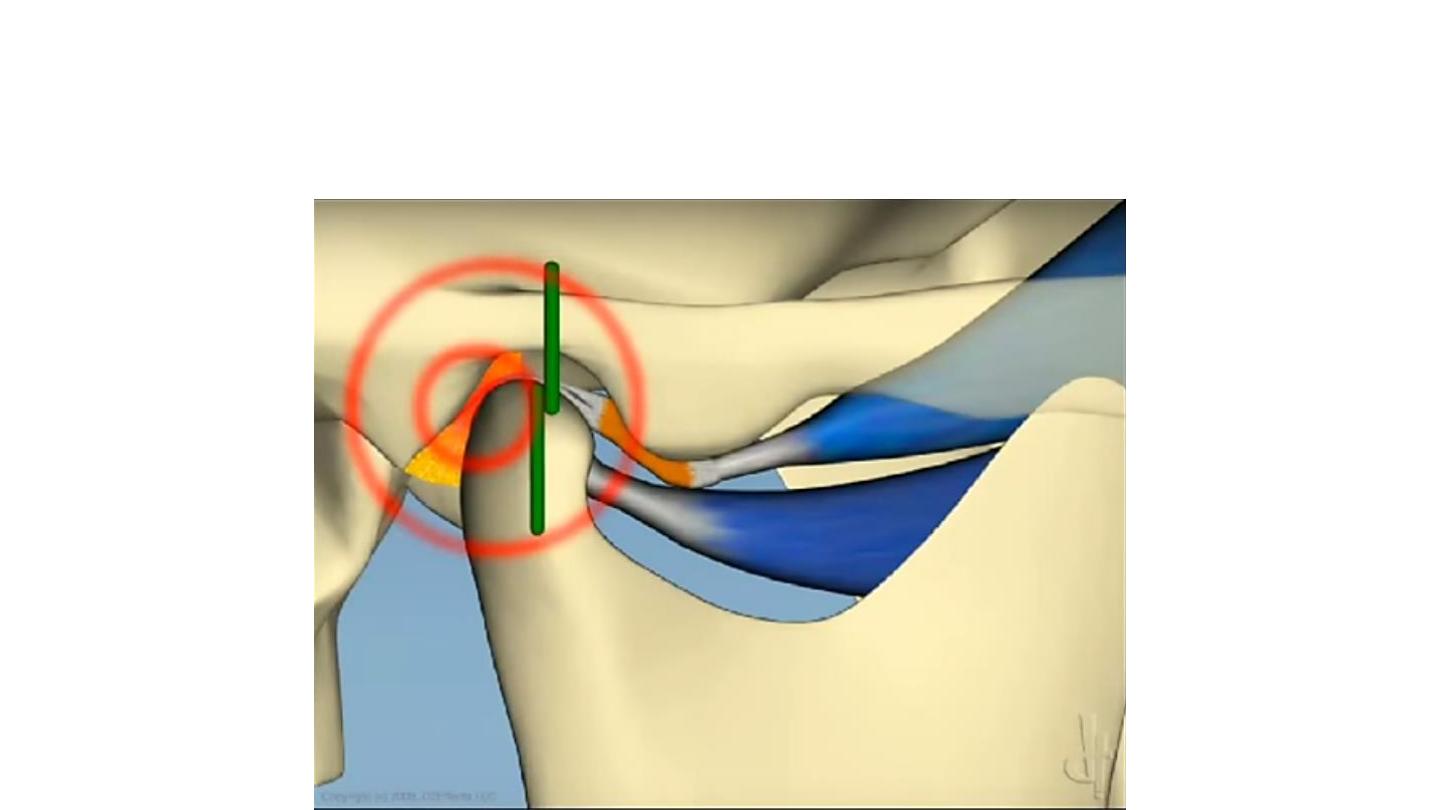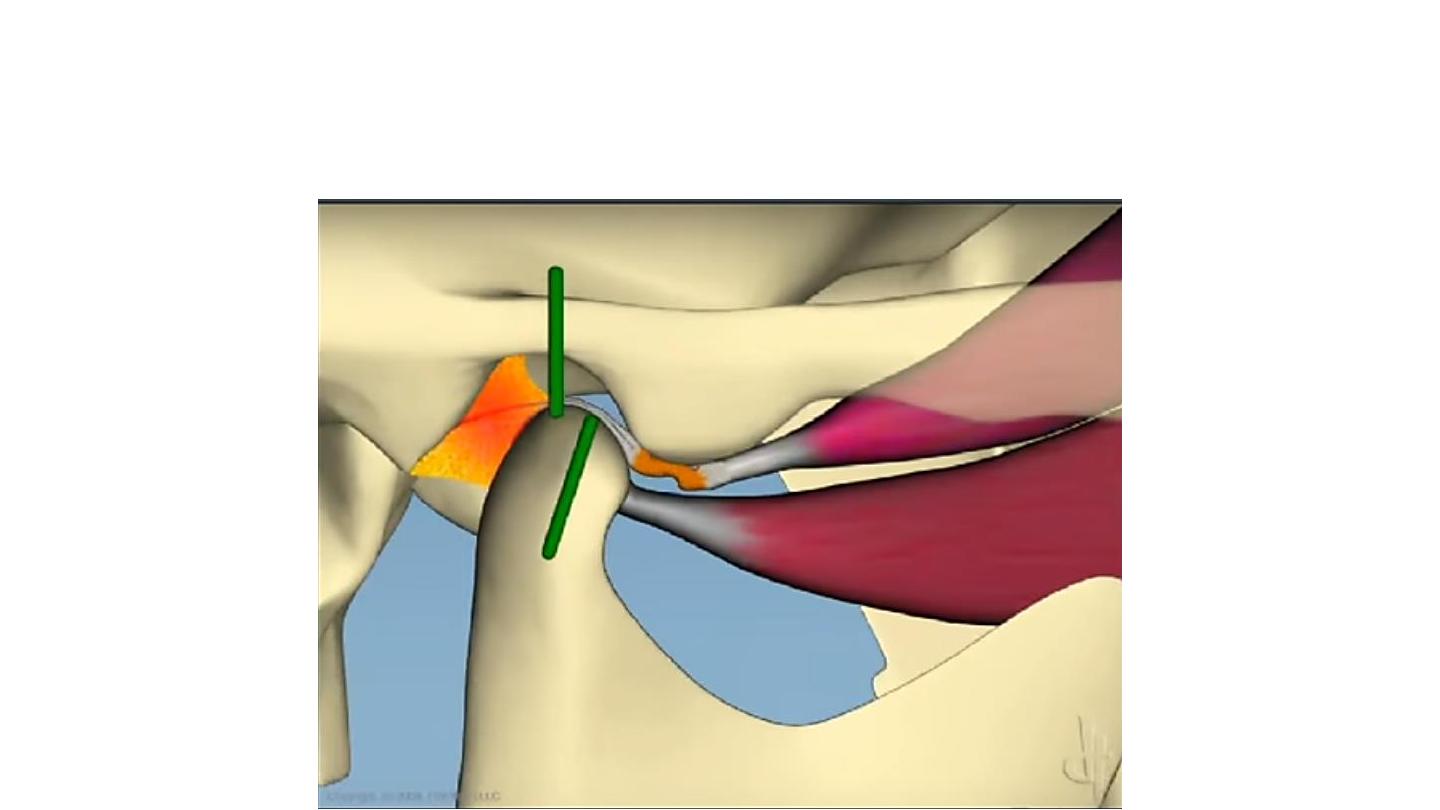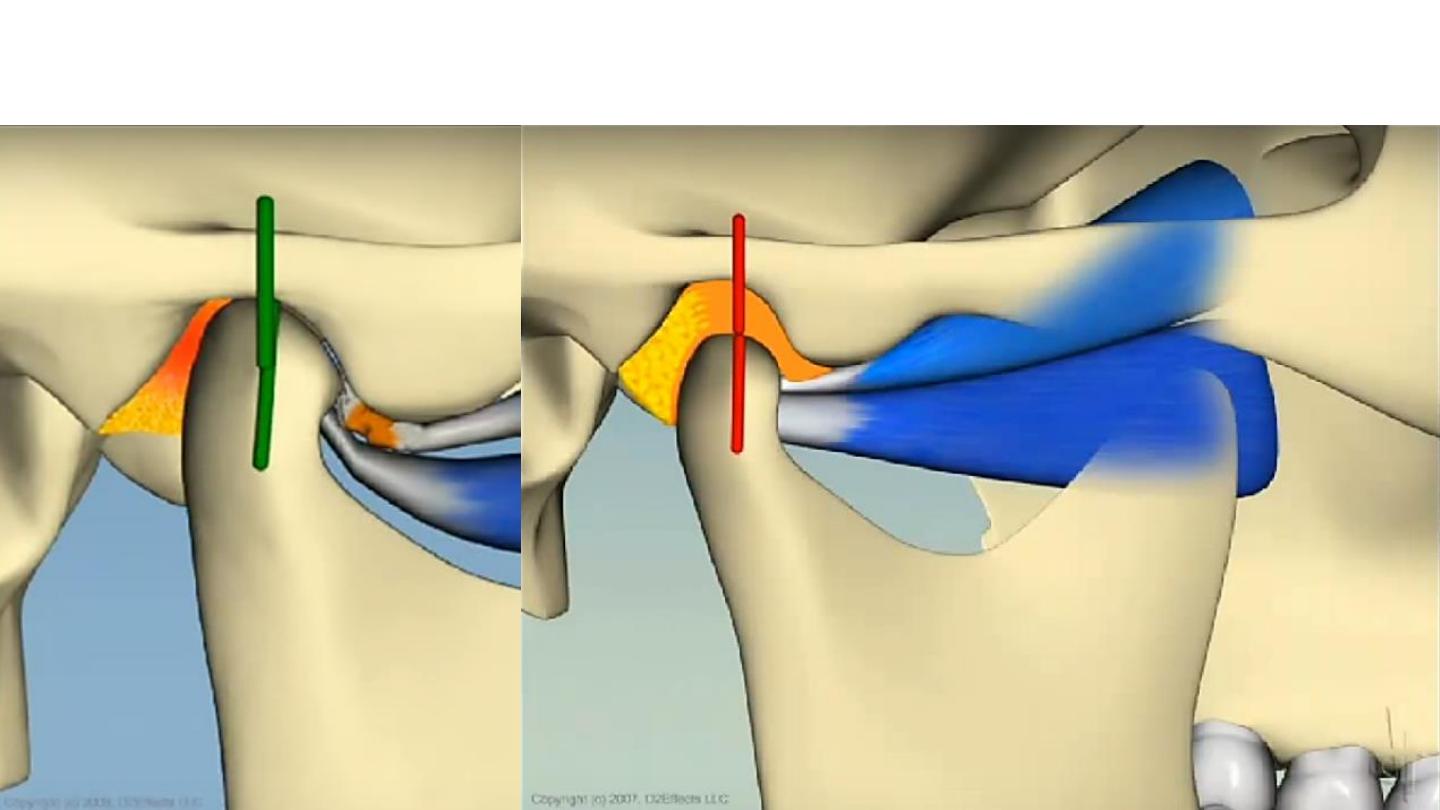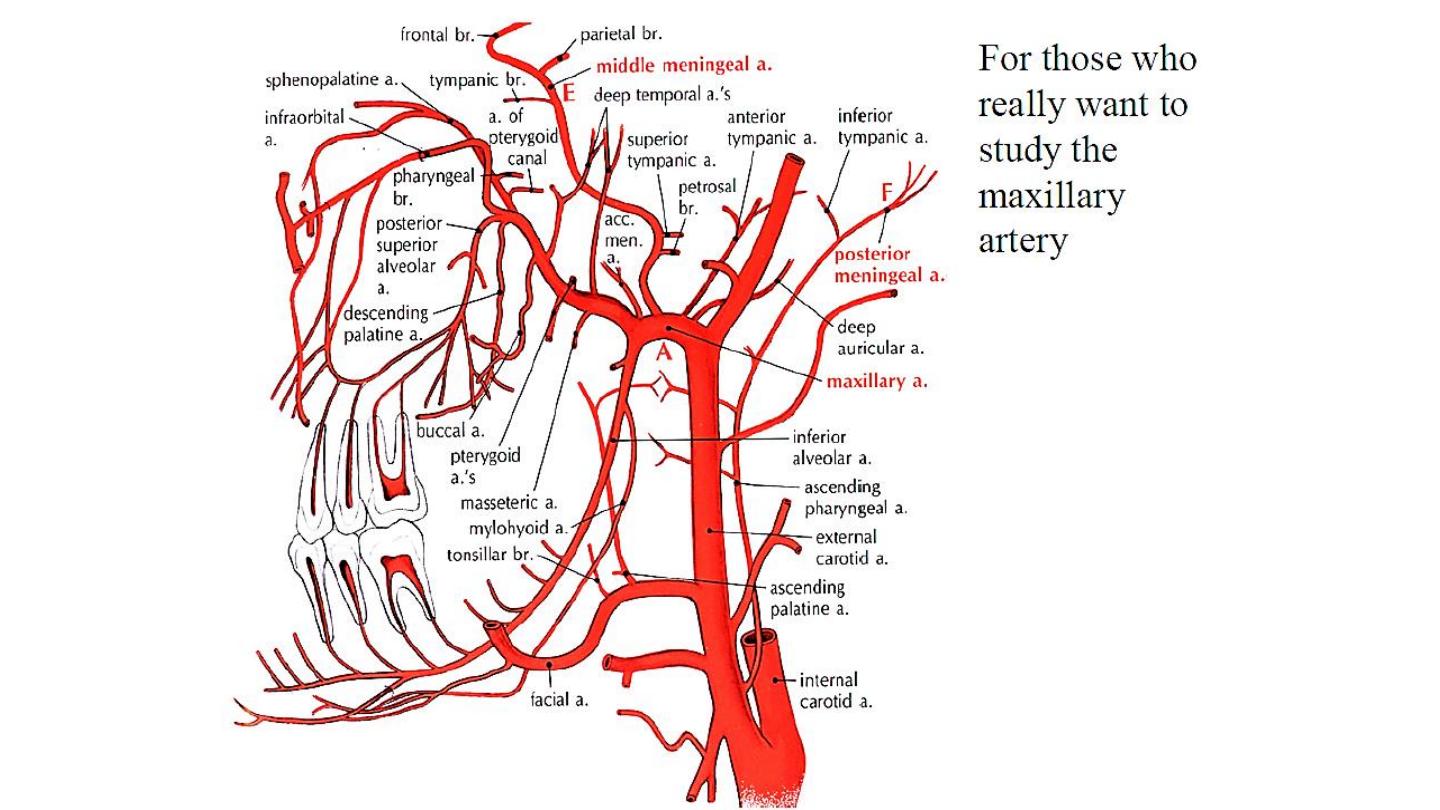
TMJ & Muscles
of Mastication
+
Mandibular
Nerve
Dr Maan Al-Abbasi
PhD (UK)
MSc
MBChB

Infratemporal Fossa Contents
• Parotid gland (glenoid process)
• Maxillary artery
• Pterygoid venous plexus
• Otic PS ganglion
• Muscles of mastication
• Mandibular nerve
• Sphenomandibular ligament
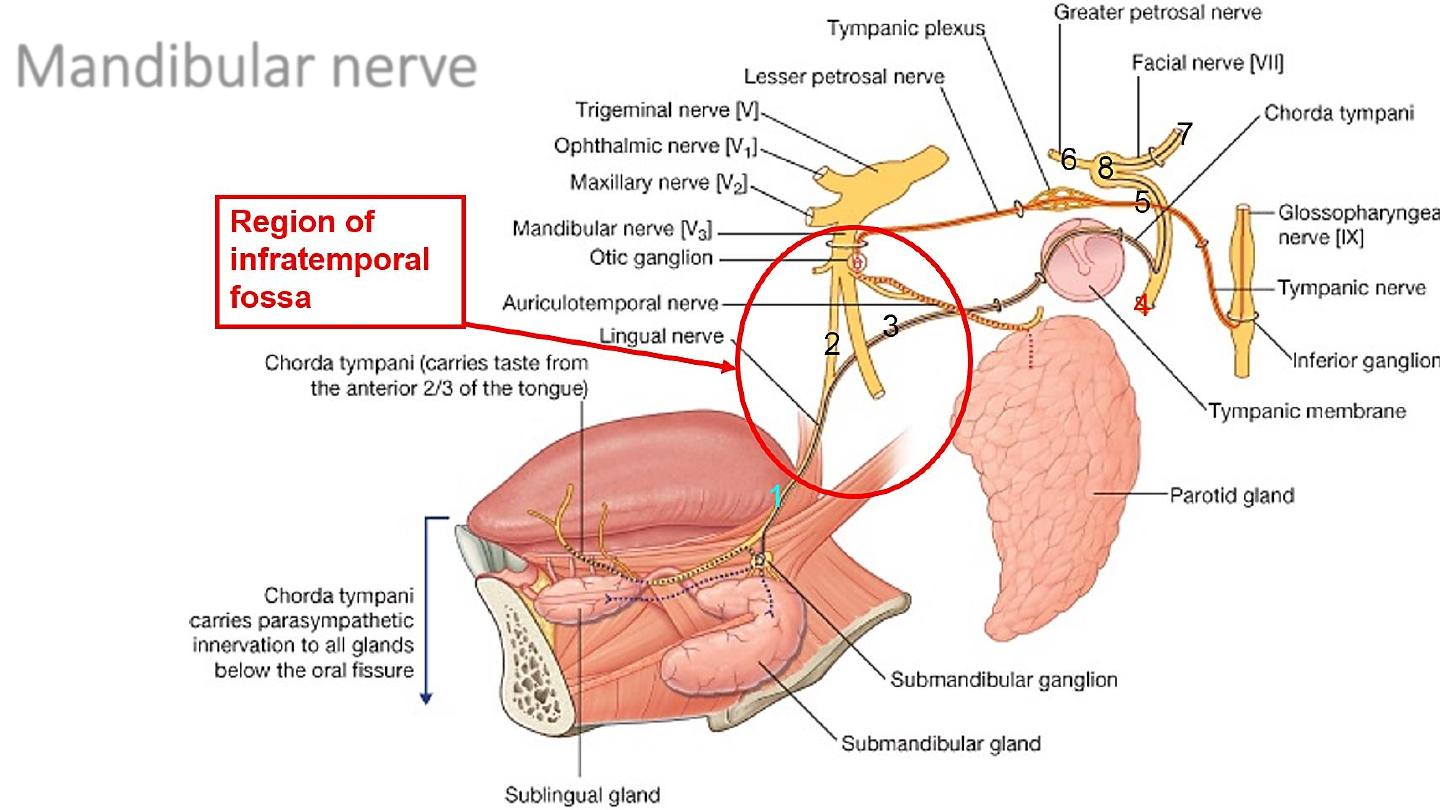
Mandibular nerve
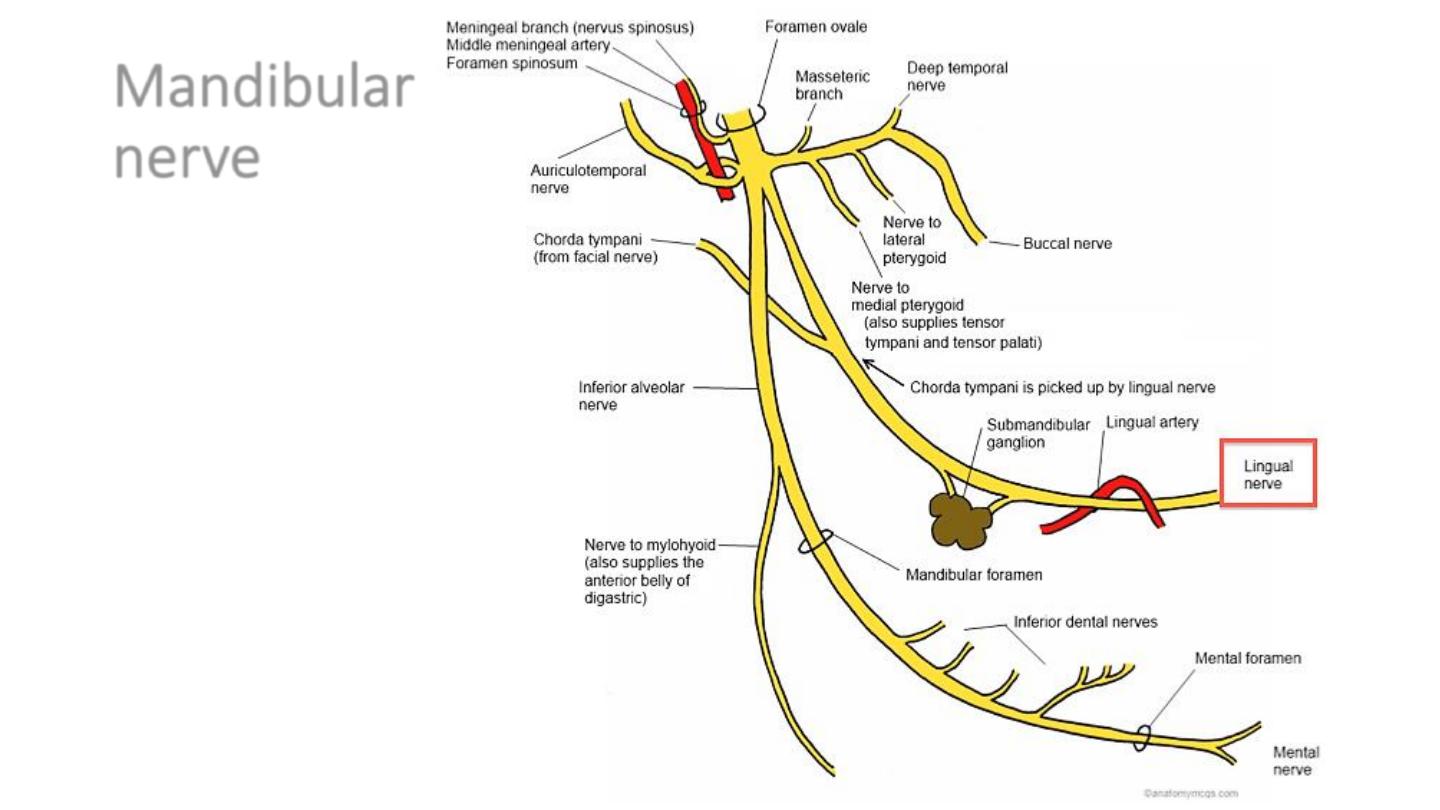
Mandibular
nerve
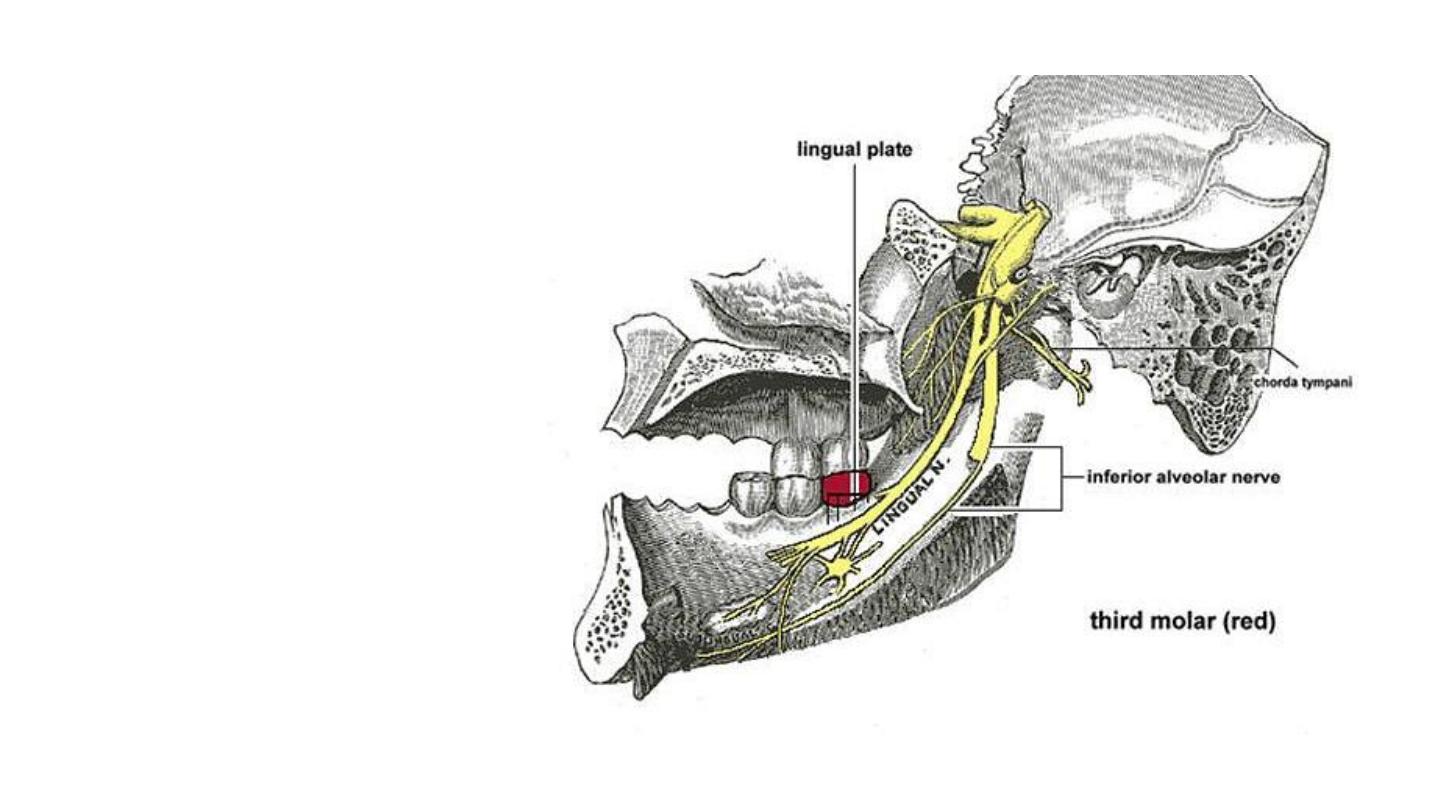
Lingual Nerve
• sensory to the:
1. anterior two thirds of
the tongue,
2. the floor of the
mouth, and
3. the lingual gingivae.
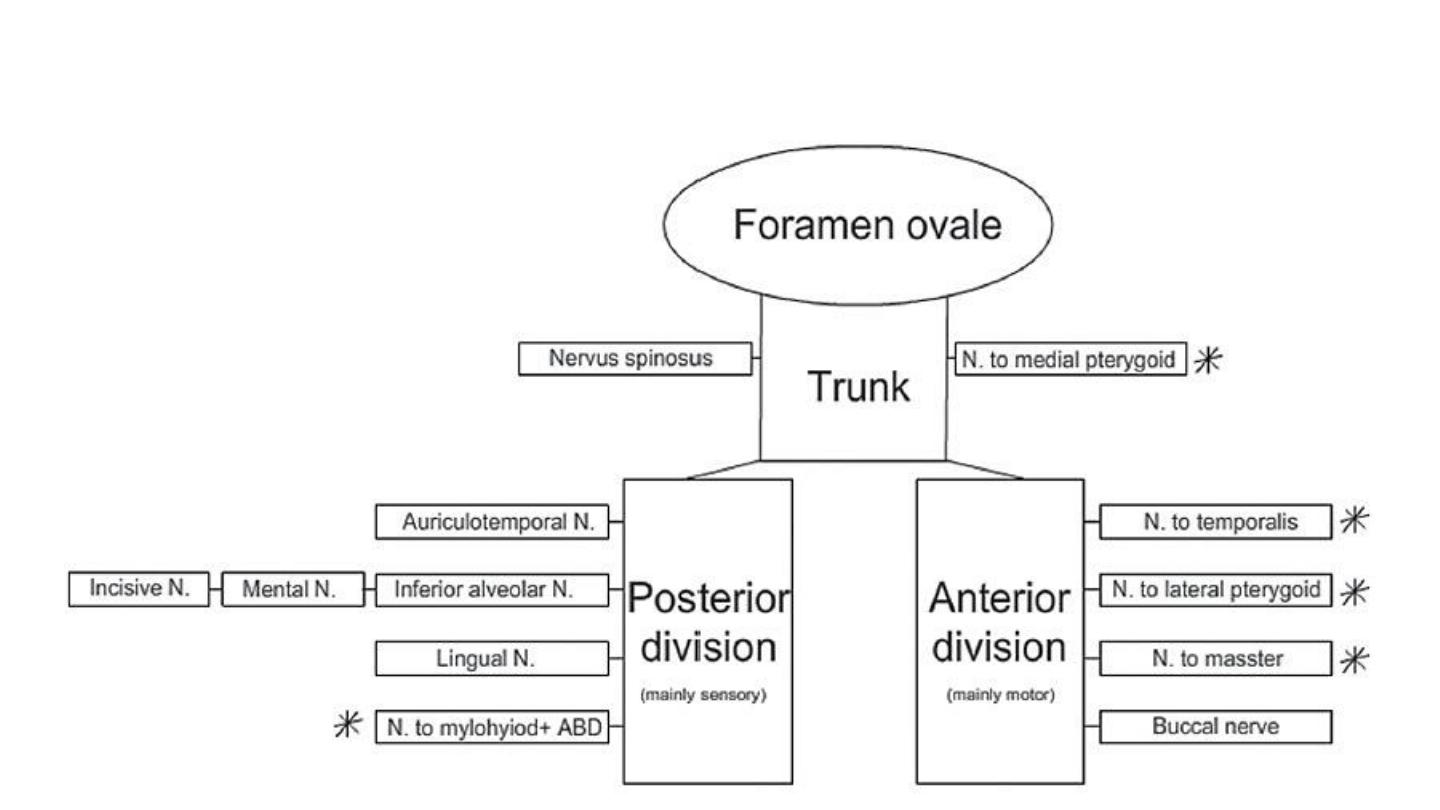
Mandibular Nerve V3
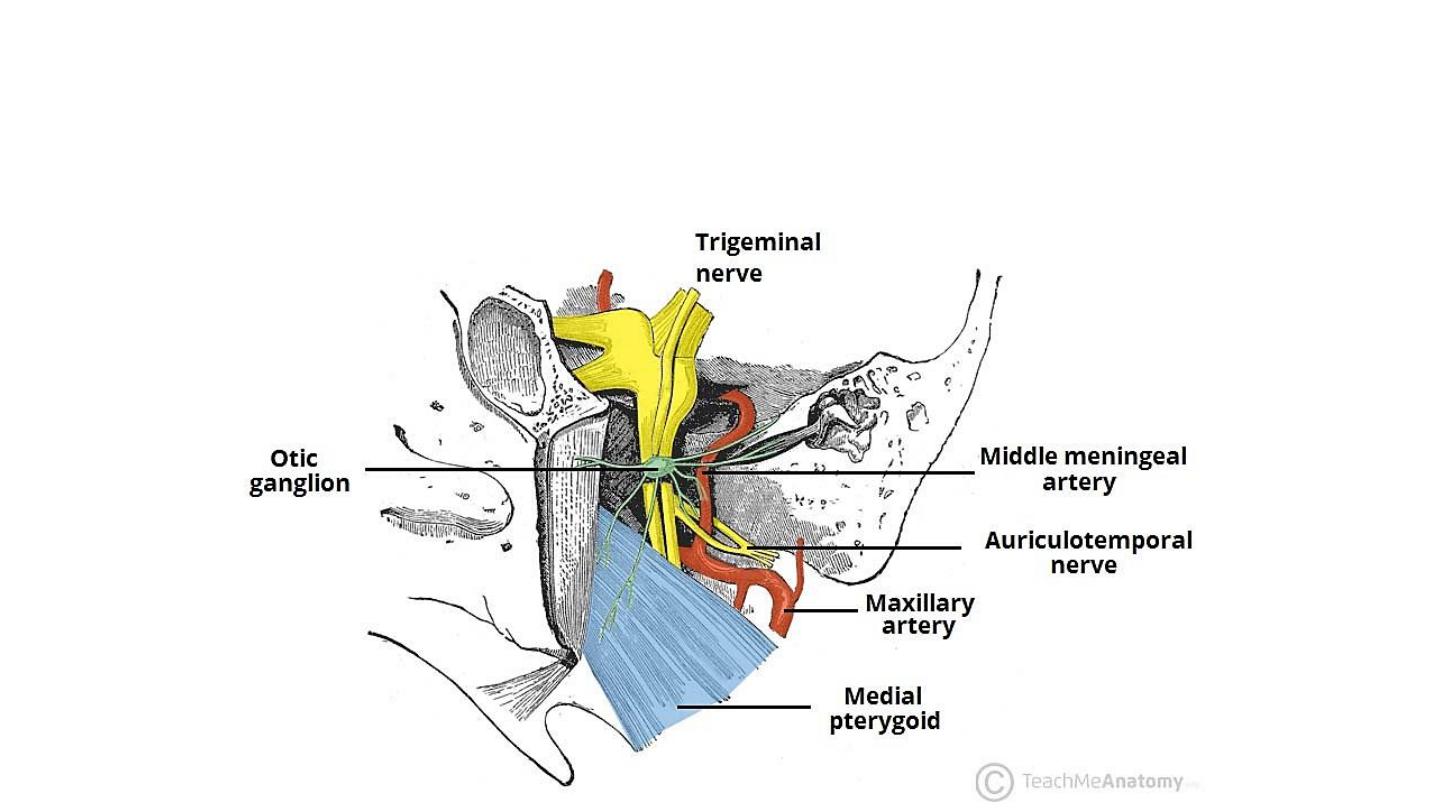
Otic parasympathetic ganglion
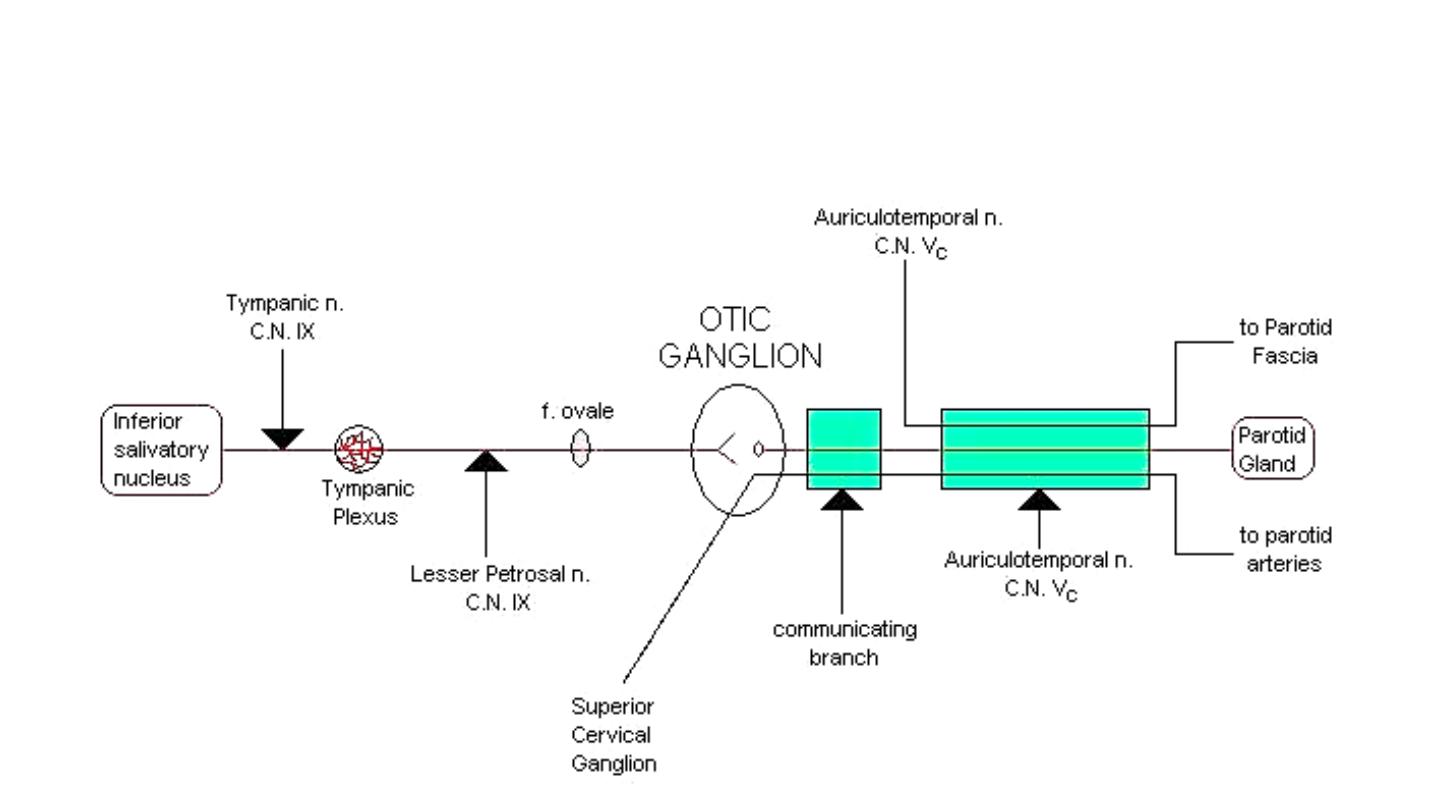
Otic parasympathetic ganglion
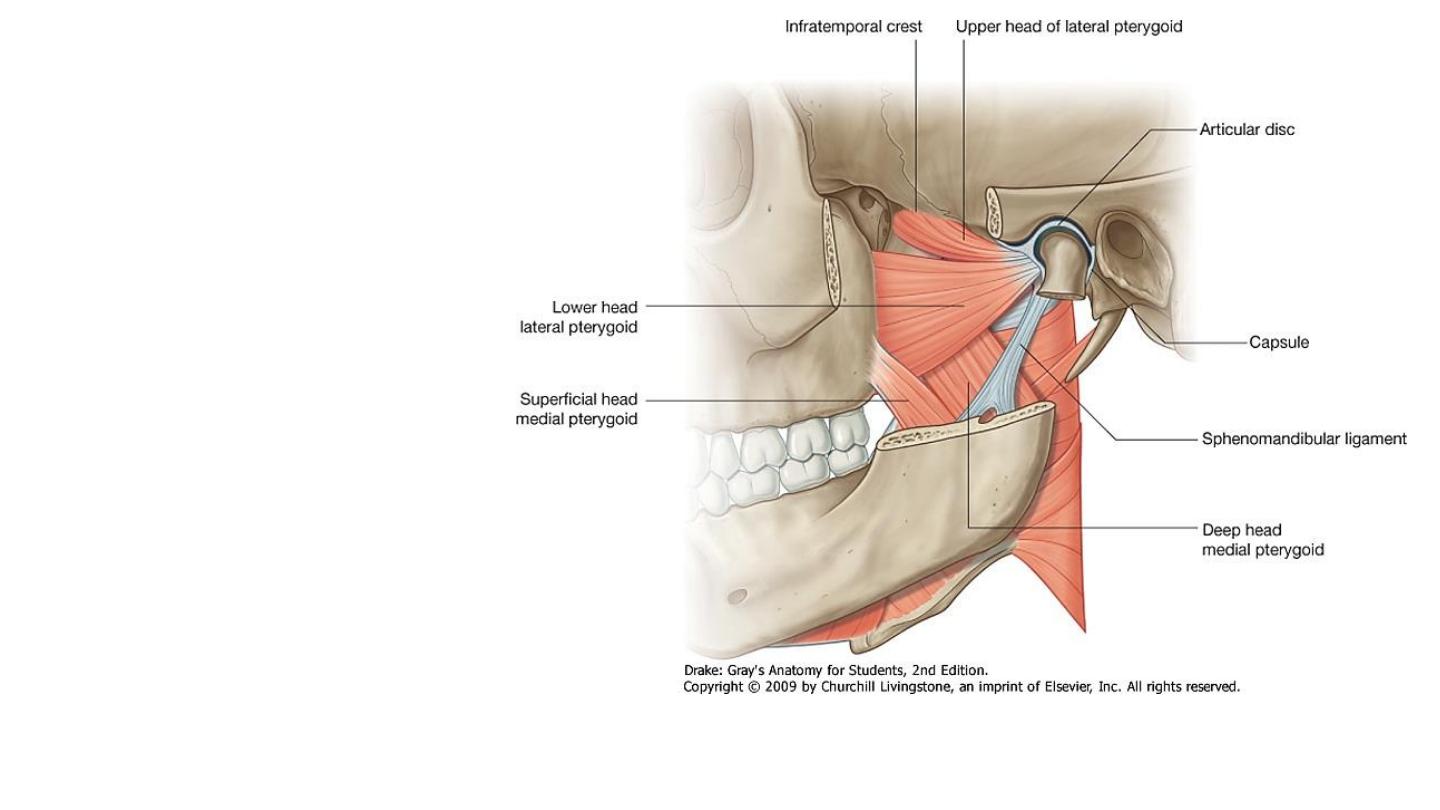
Muscles of
Mastication
• All supplied by Mandibular division
of Trigeminal (V3)
• All derived from pharyngeal arch
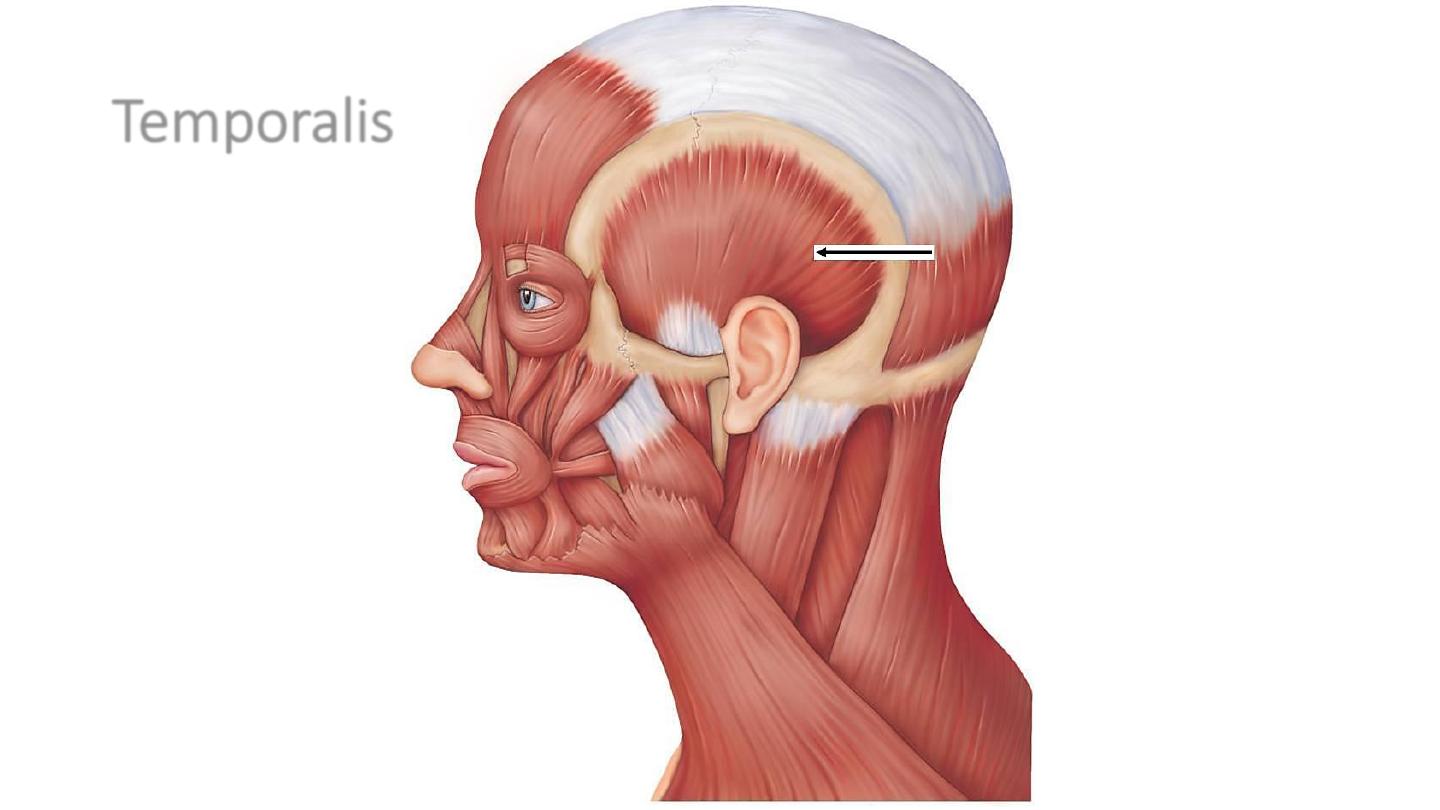
Temporalis
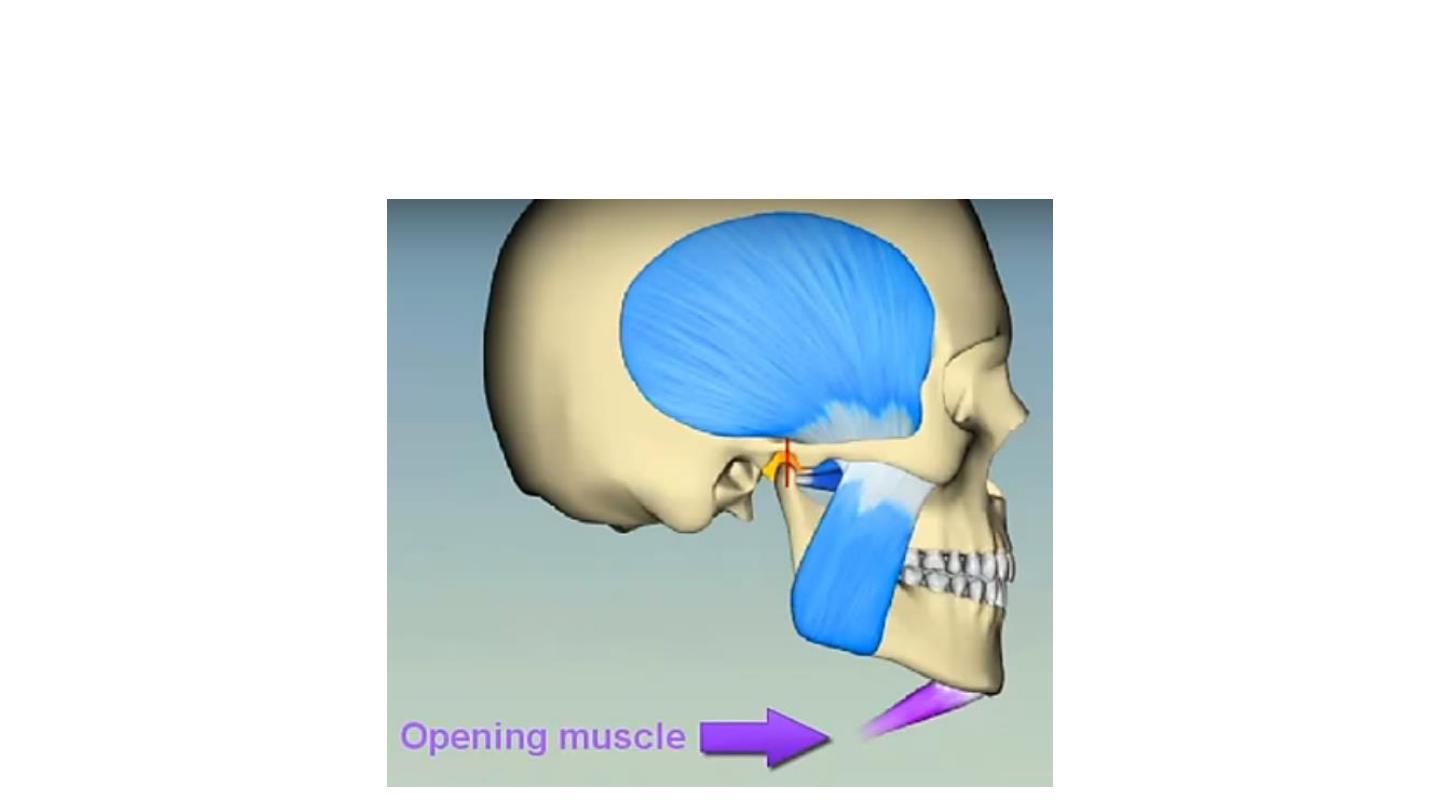
Opening - Depression
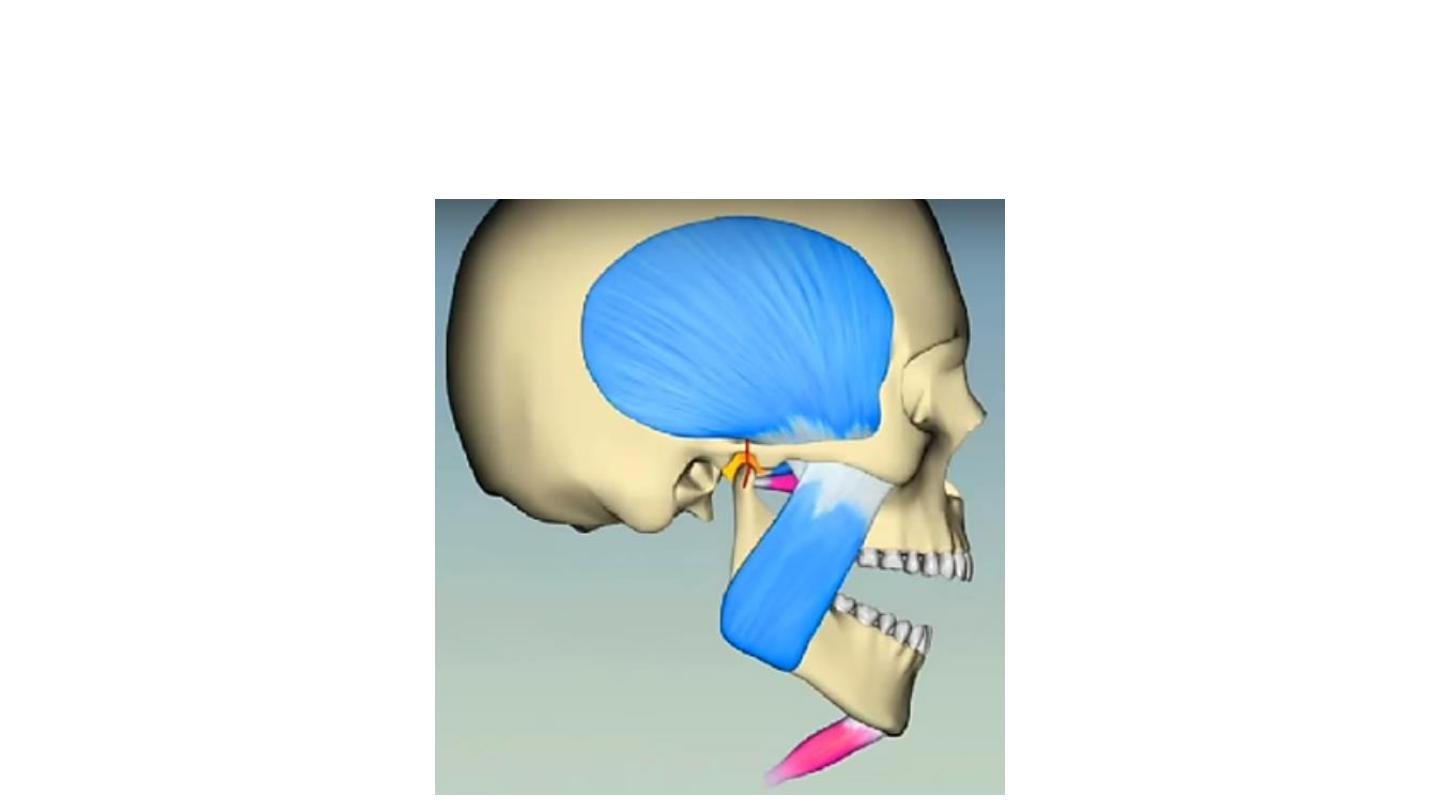
Opening - Depression
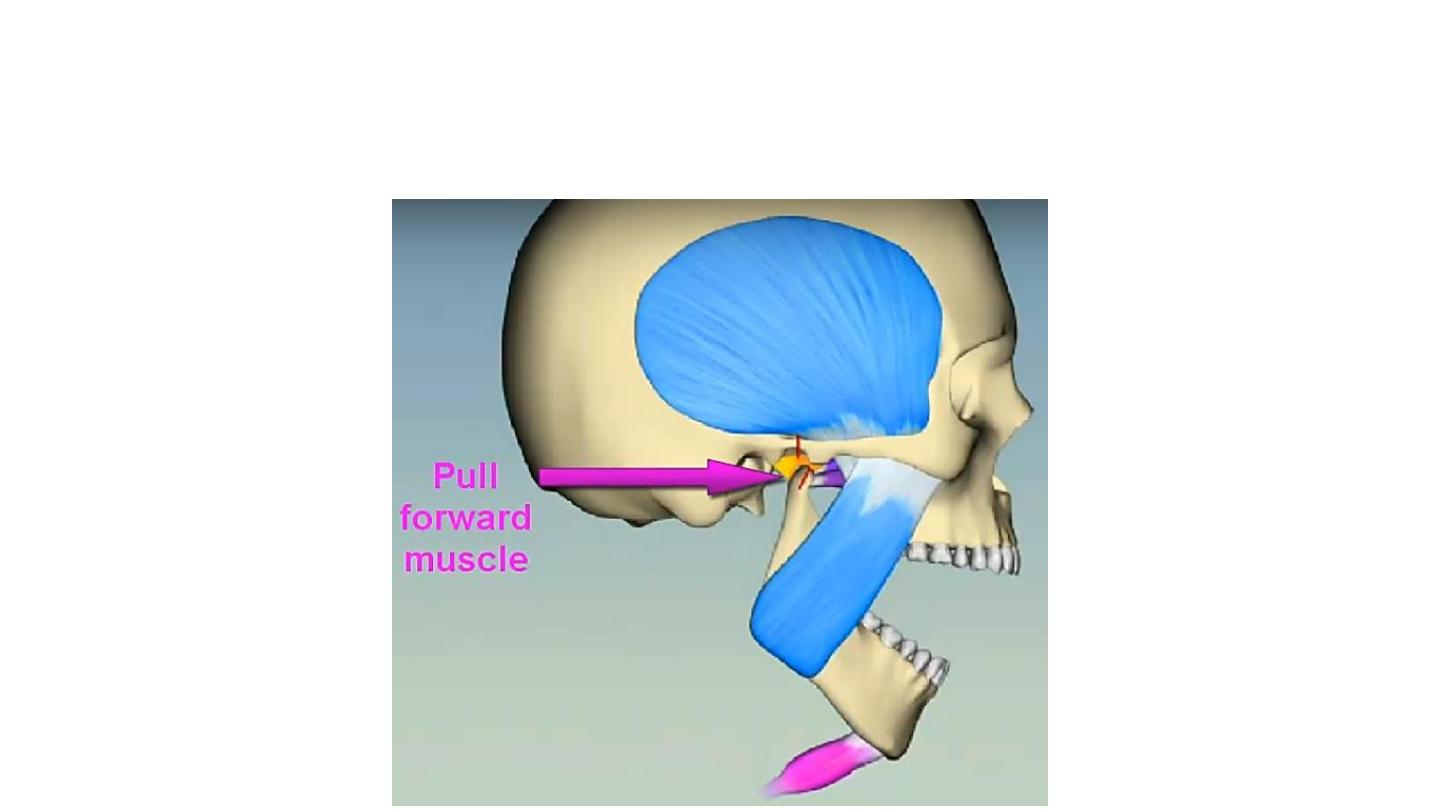
Opening - Depression
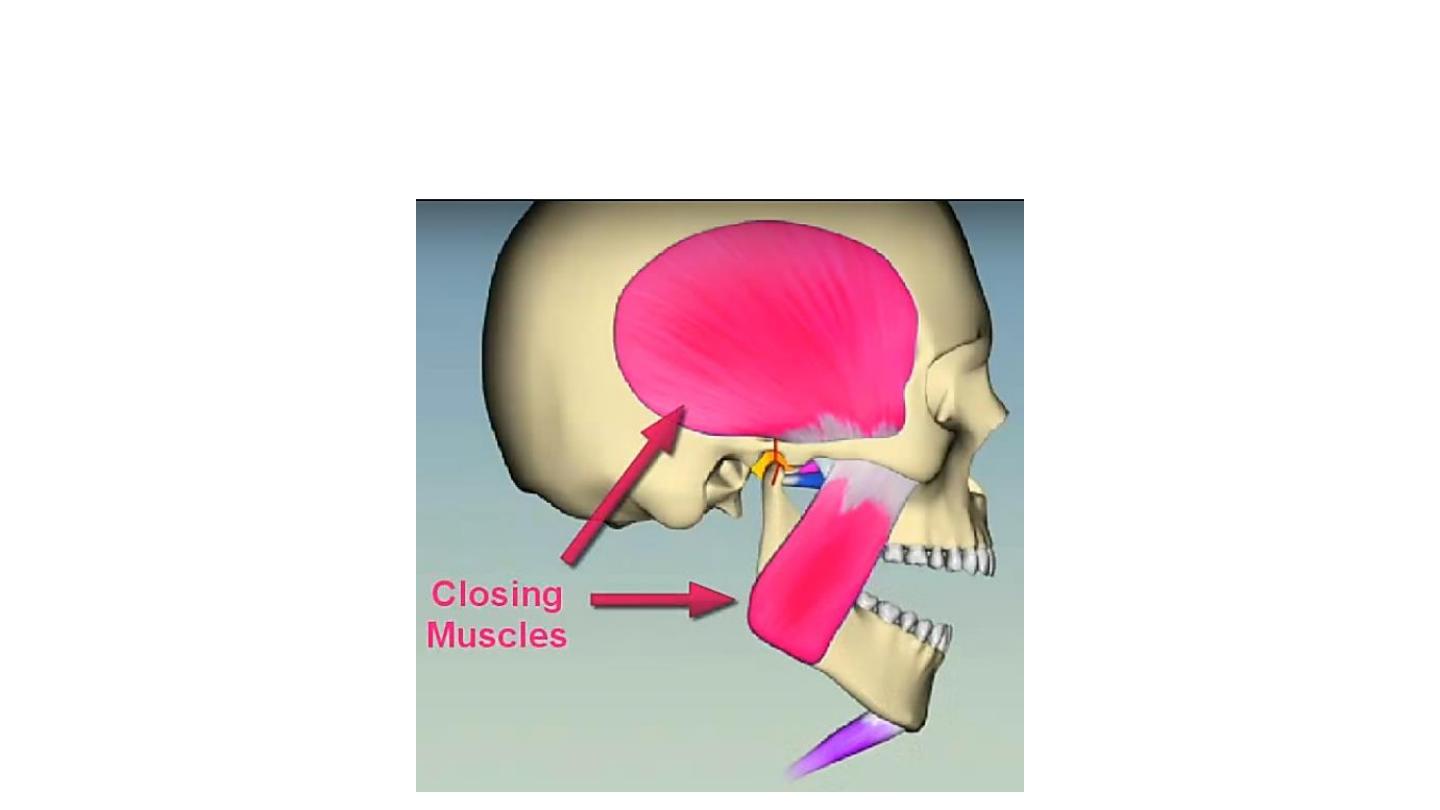
Closing - Elevation
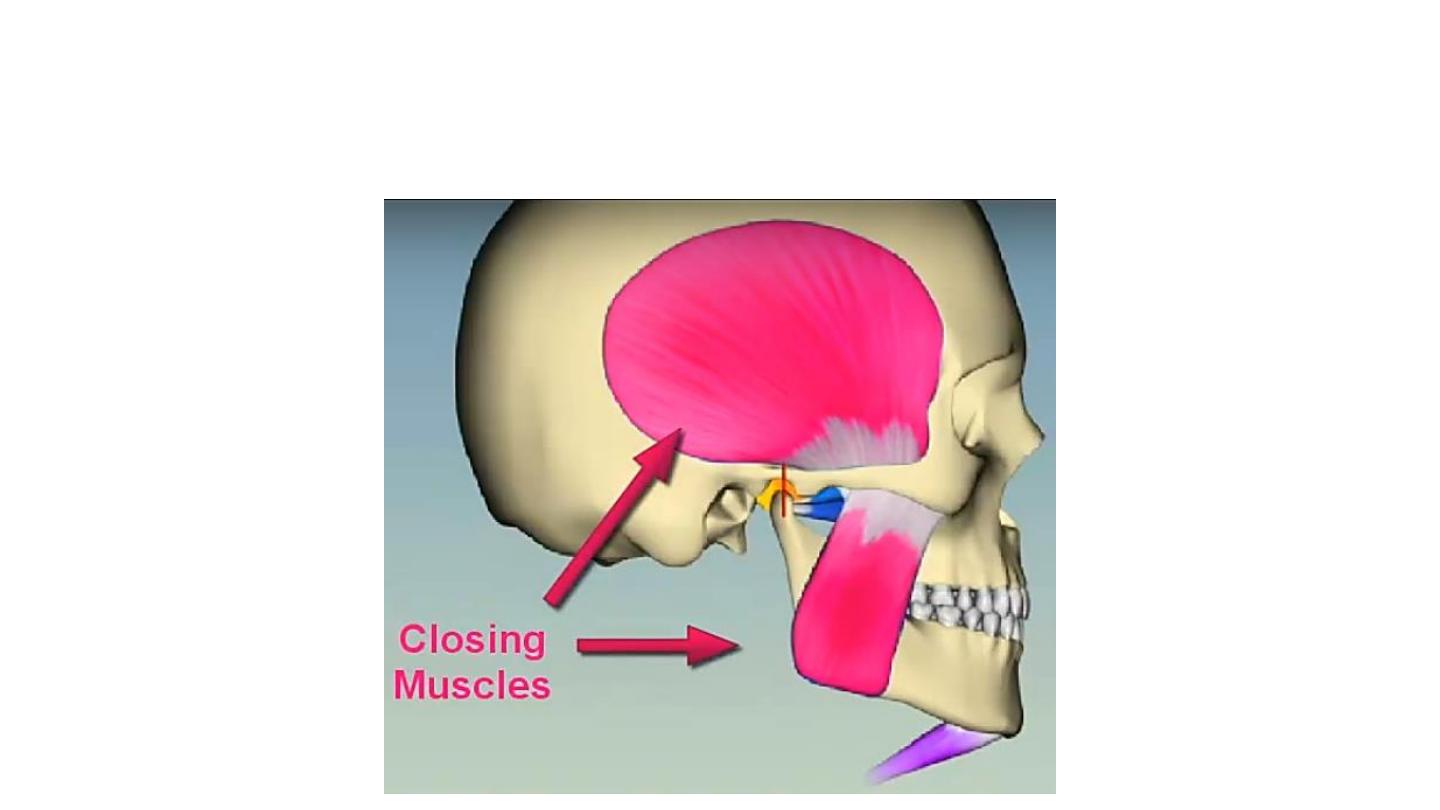
Closing - Elevation

Functions of muscles of mastication
Lateral Pterygoids
• Upper head - involved mainly with chewing, and functions to anteriorly rotate the
disc on the condyle during the closing movement
• Lower head - exerts an anterior, lateral, and inferior pull on the mandible, thereby
opening the jaw, protruding the mandible, and deviating the mandible to the
opposite side
Medial Pterygoids
• Working bilaterally - assists in mouth closing.
• Working unilaterally – deviation of the mandible toward the opposite side

Functions of muscles of mastication
Masseter
• Elevate the mandible, thereby occluding the teeth during mastication.
Temporalis
• Assists with mouth closing/side-to-side grinding of the teeth.
• Also provides a good deal of stability to the joint
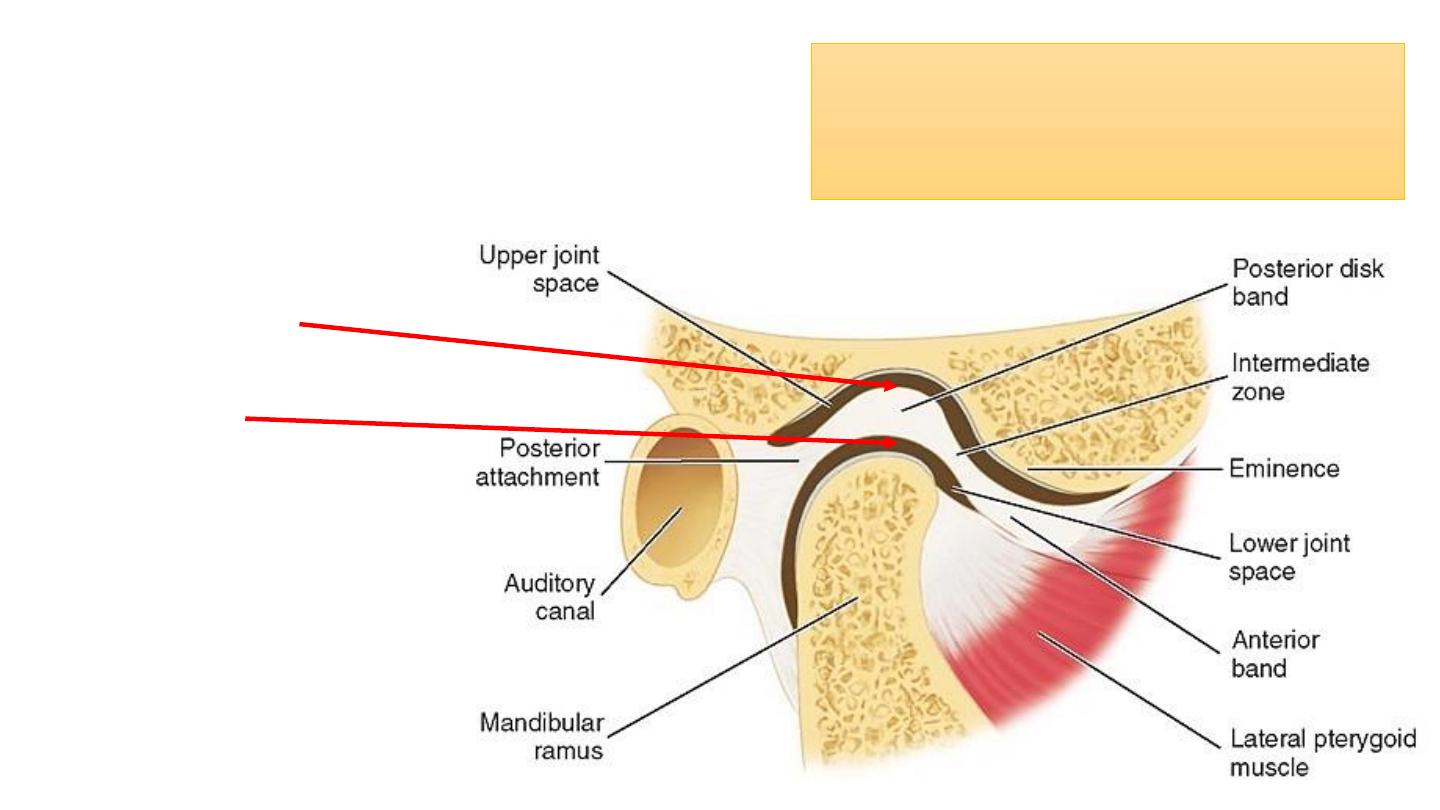
Temporomandibular Joint
• The articular surfaces of the TMJ are
lined by fibrous tissue (i.e. develops
in membrane)
Condylar joint
Hinge joint
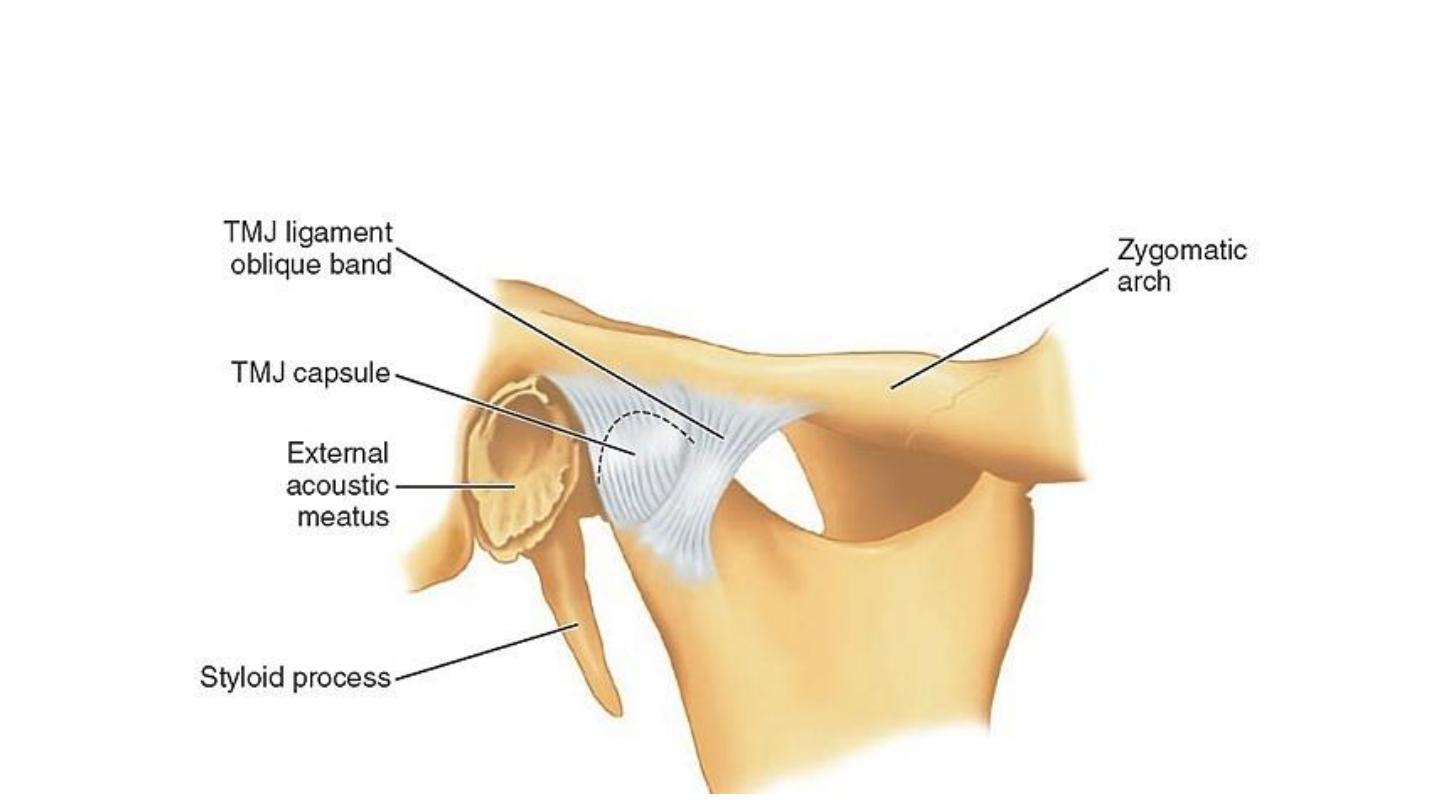
Temporomandibular Joint
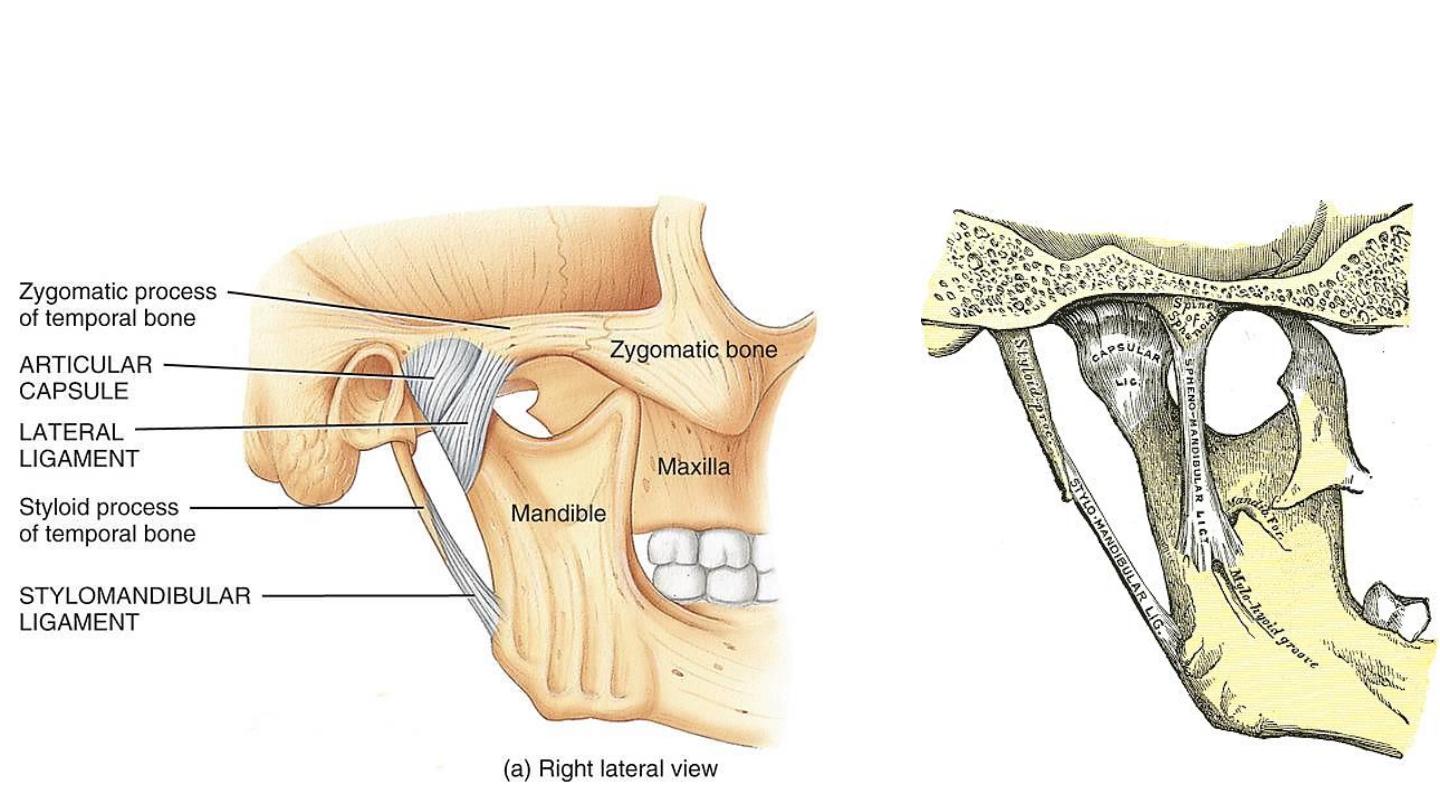
Temporomandibular Joint
Medial View
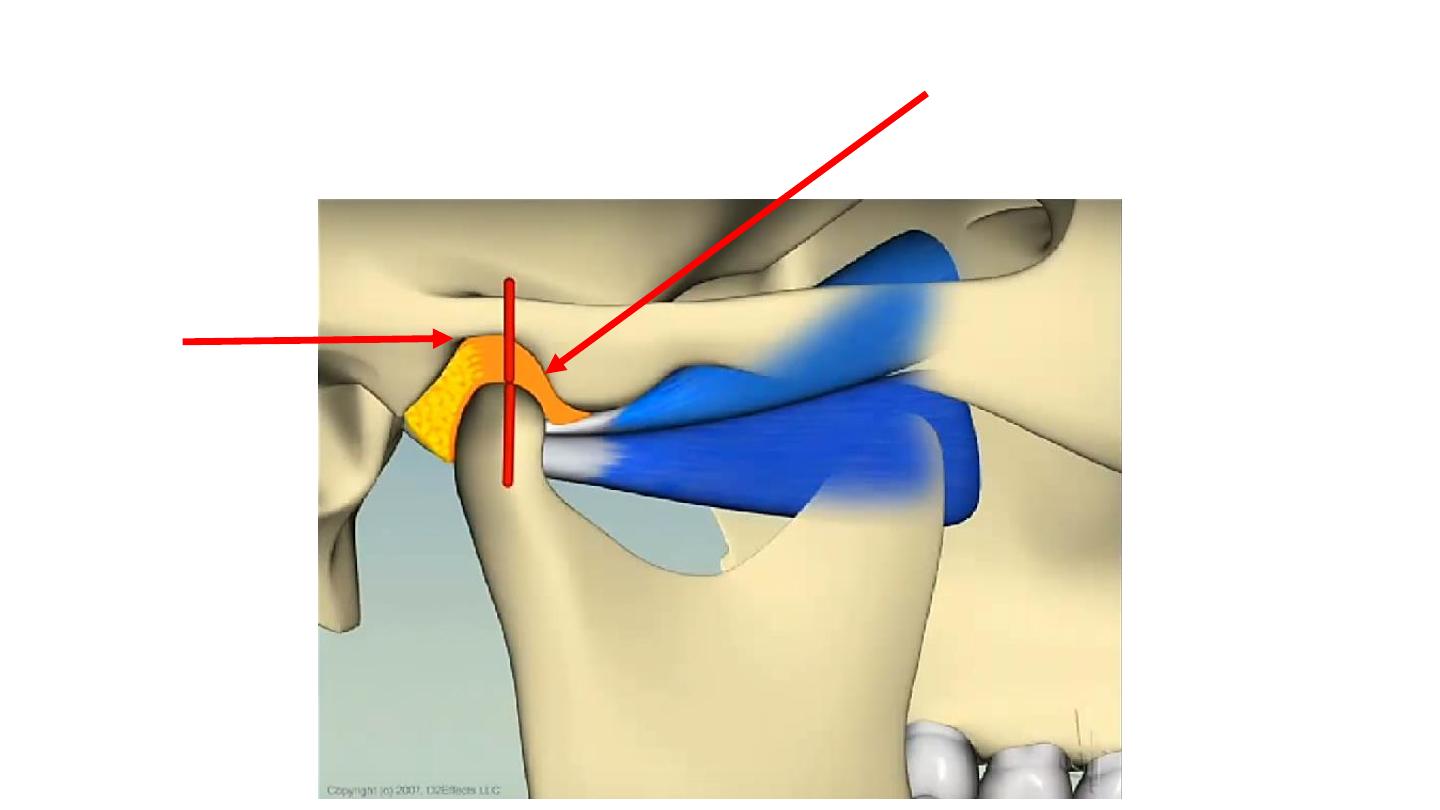
TMJ
Fossa
Disc
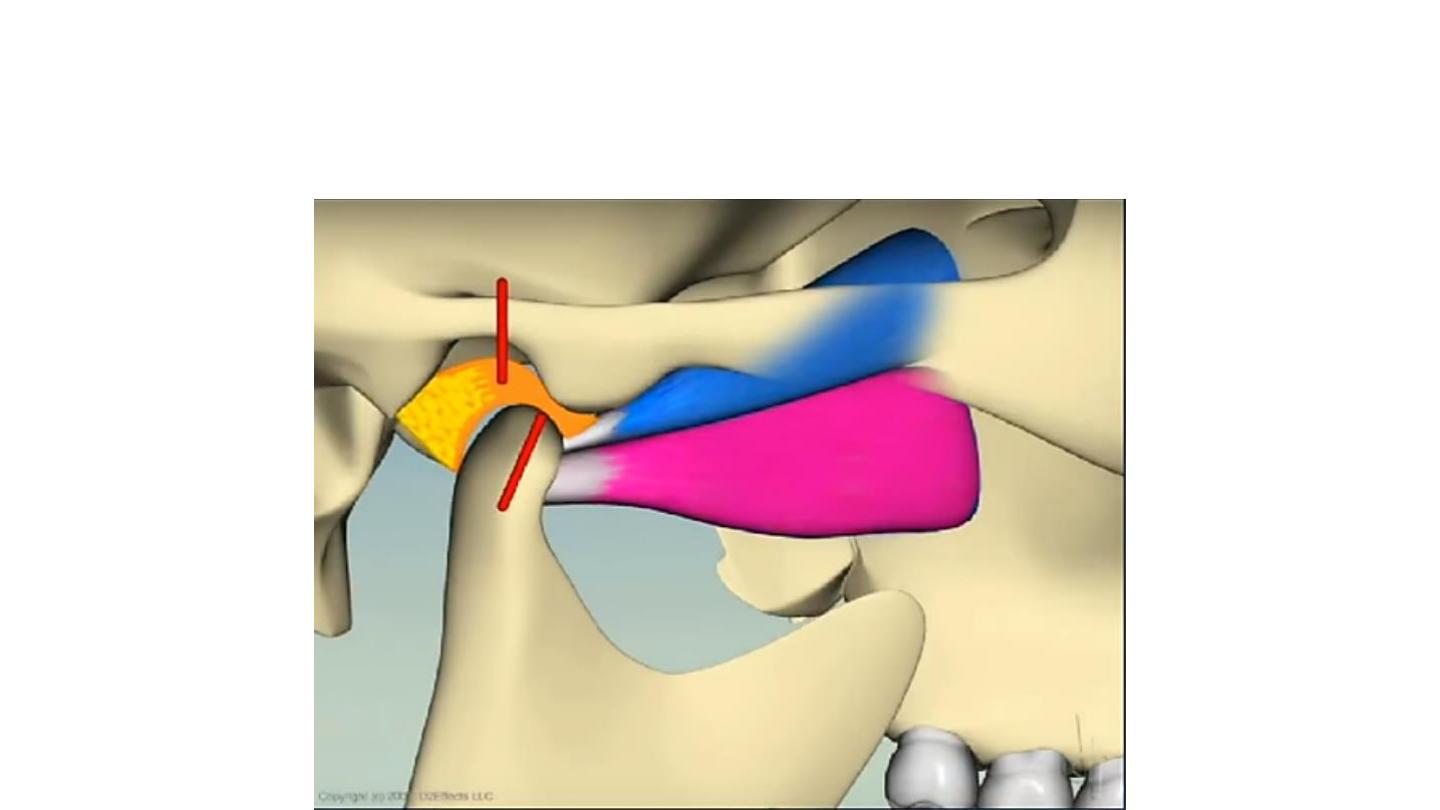
TMJ
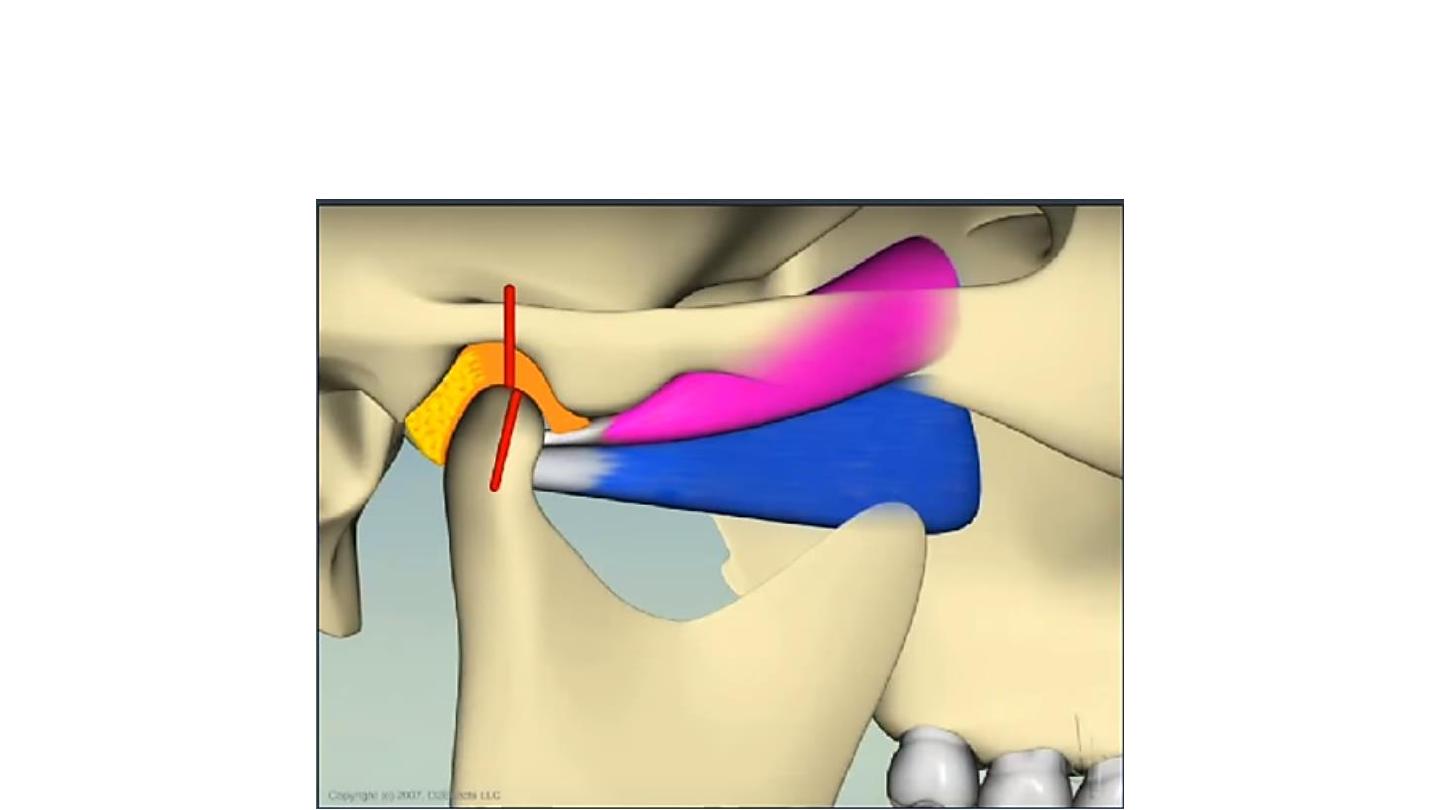
TMJ
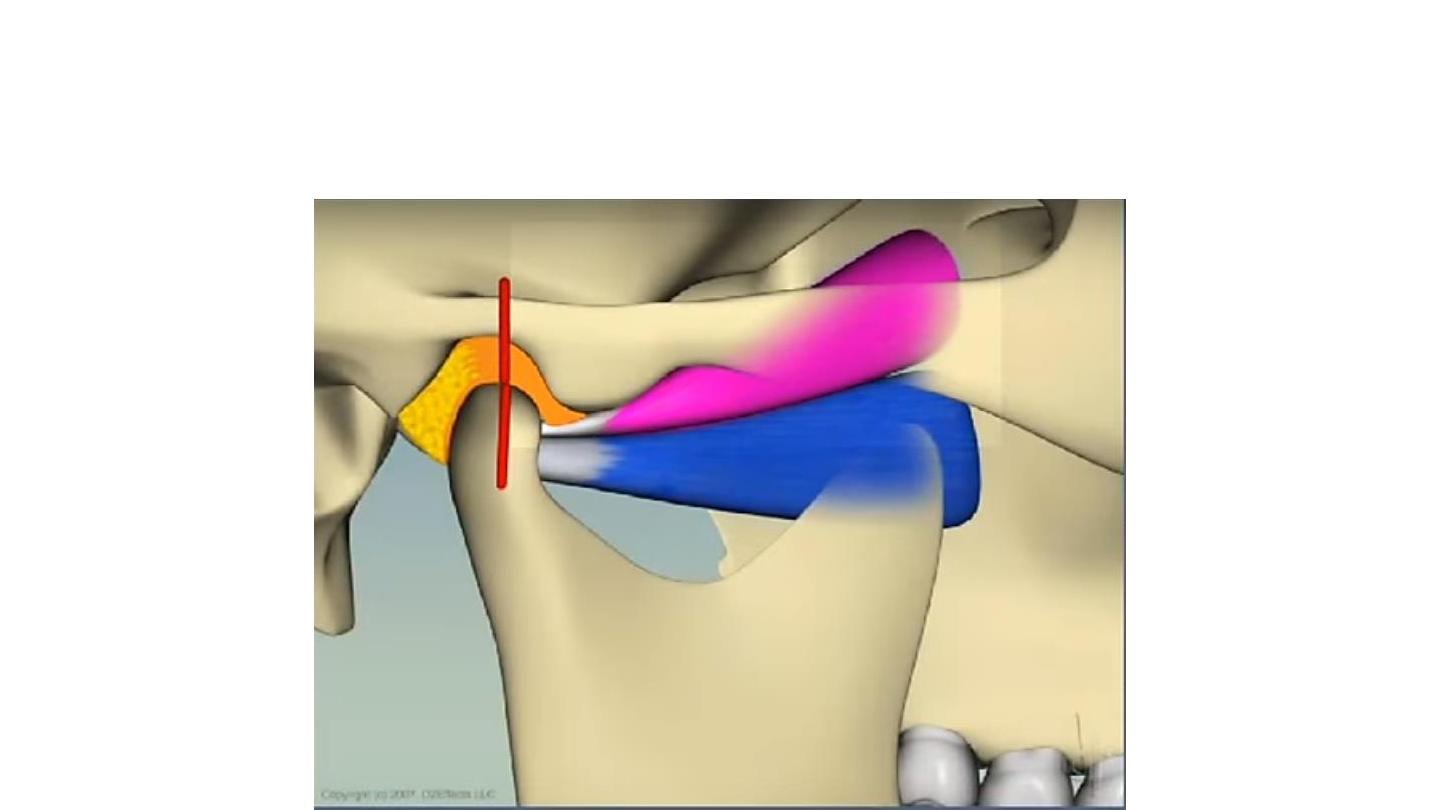
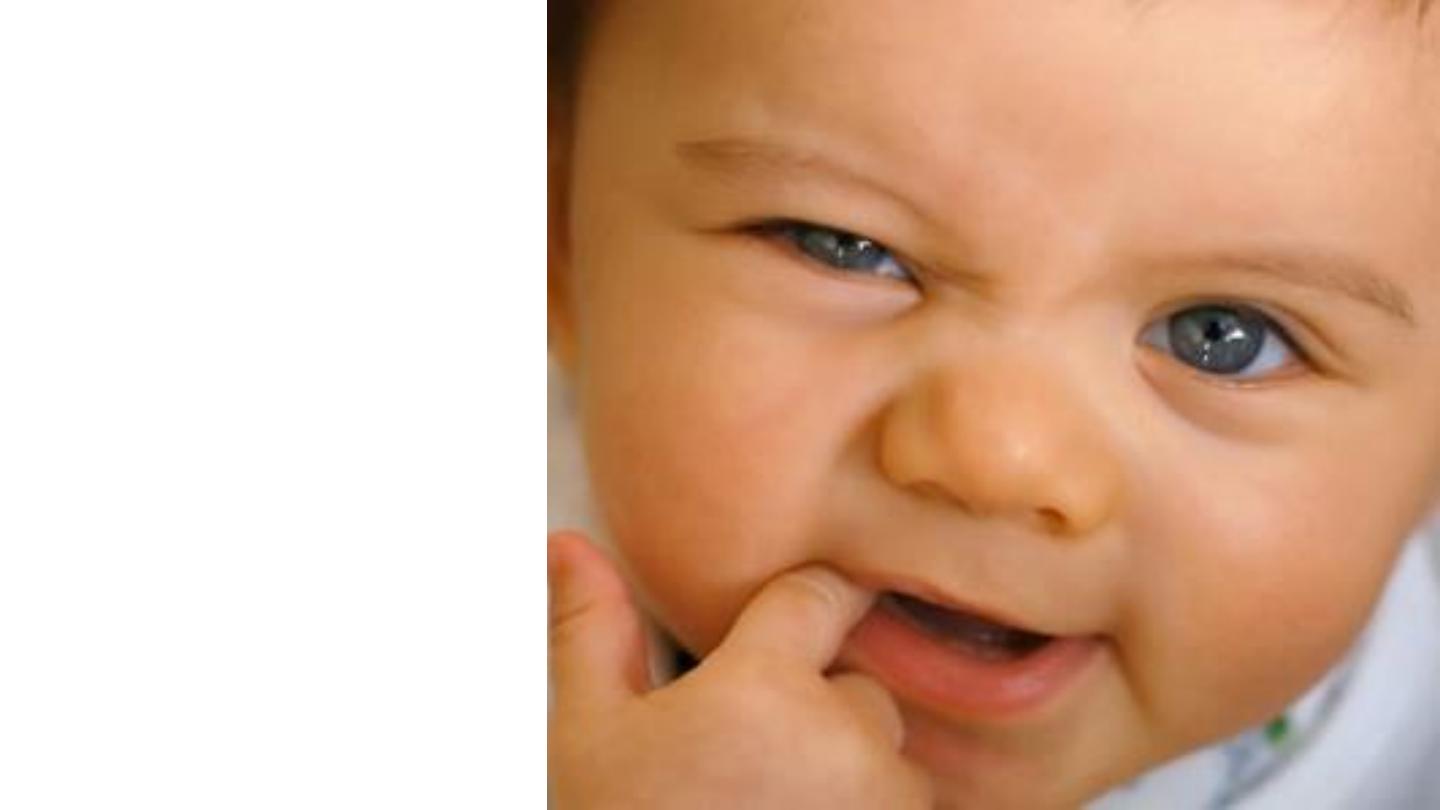
Biting
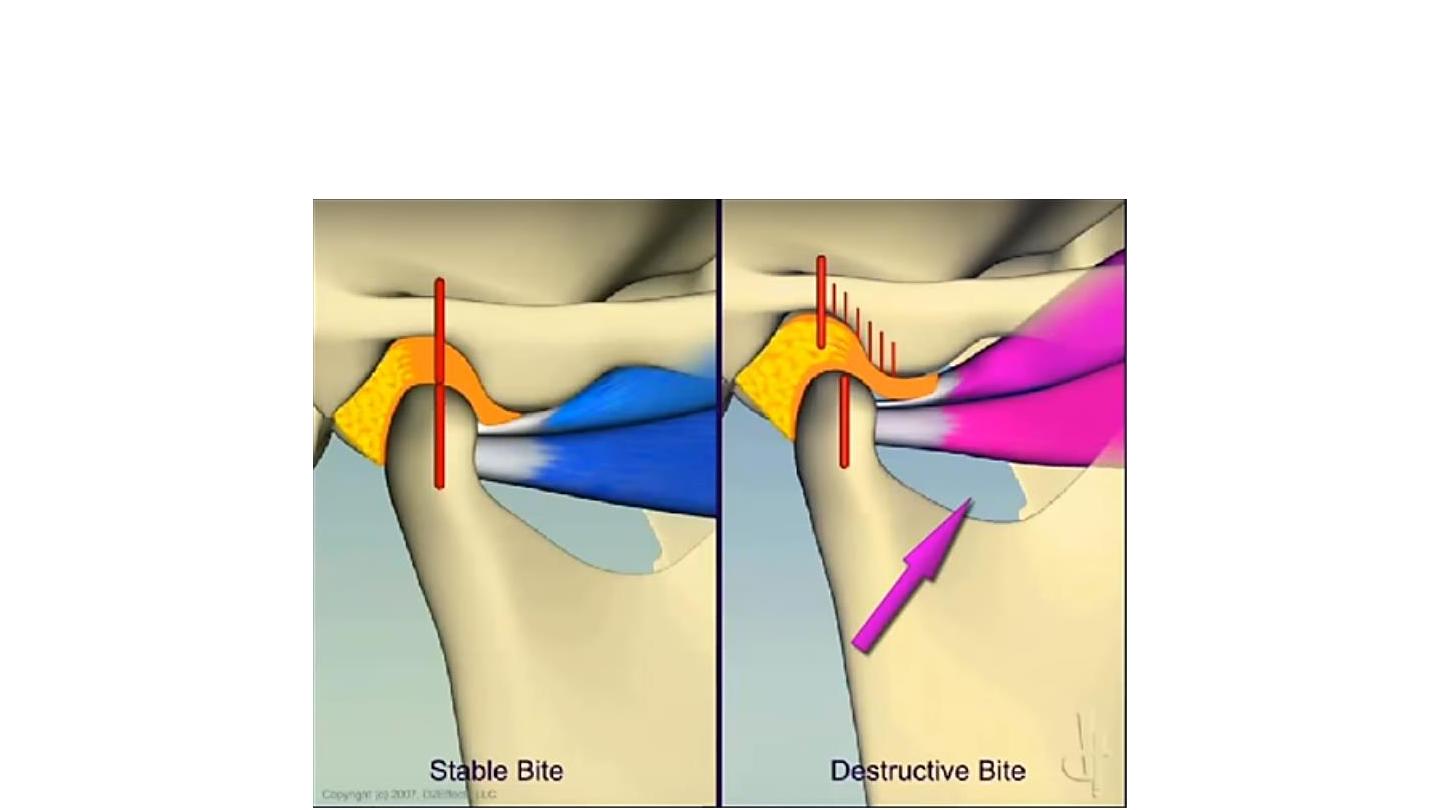
Biting
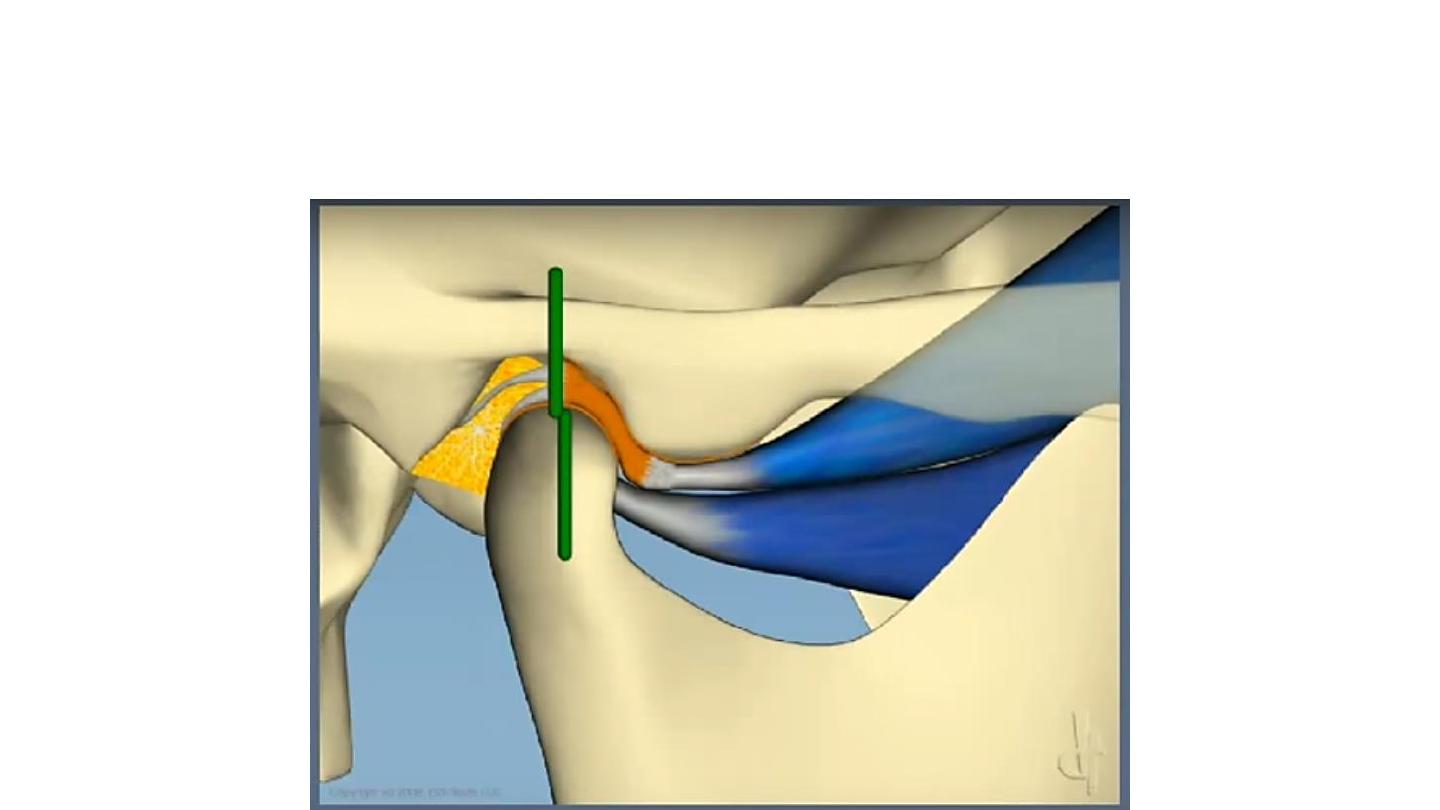
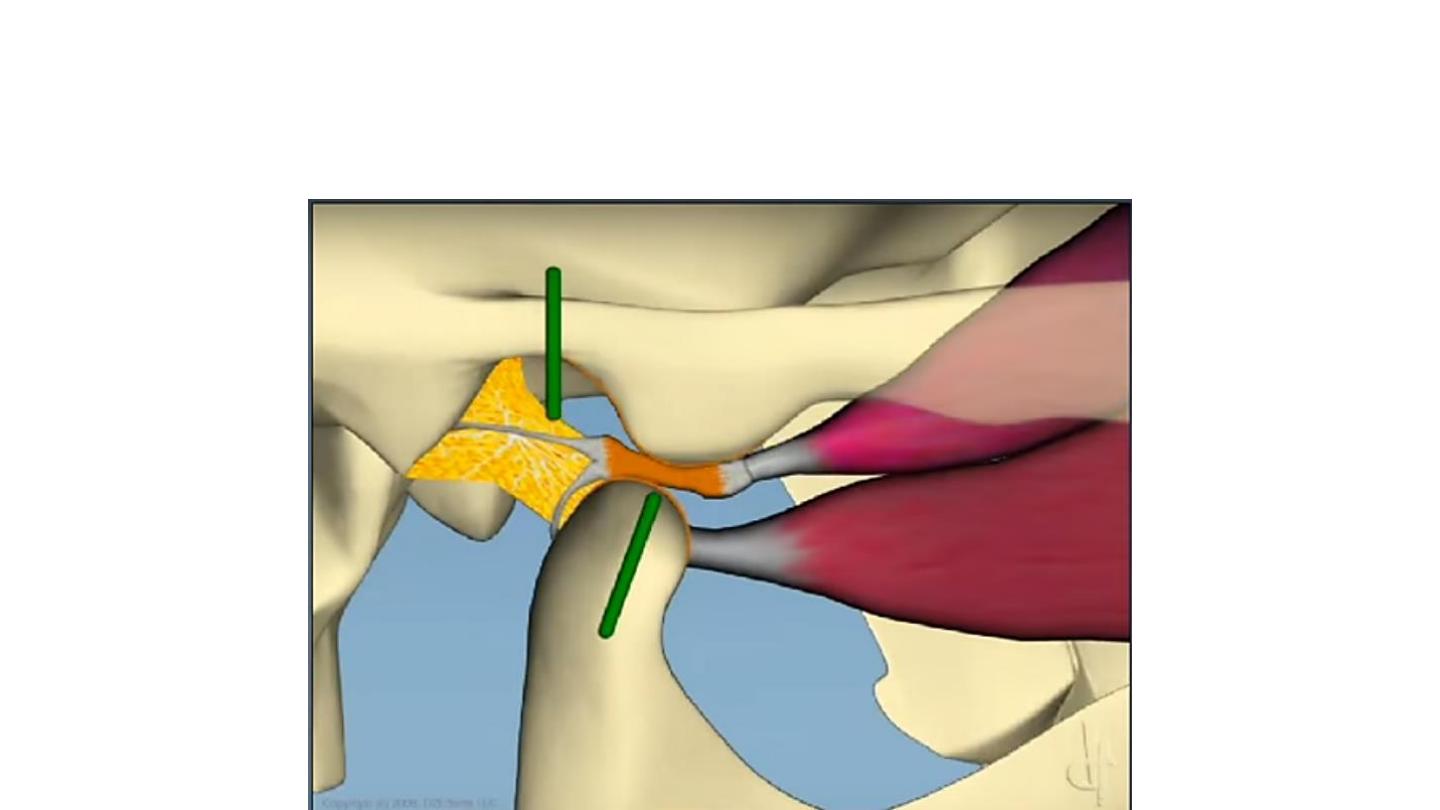
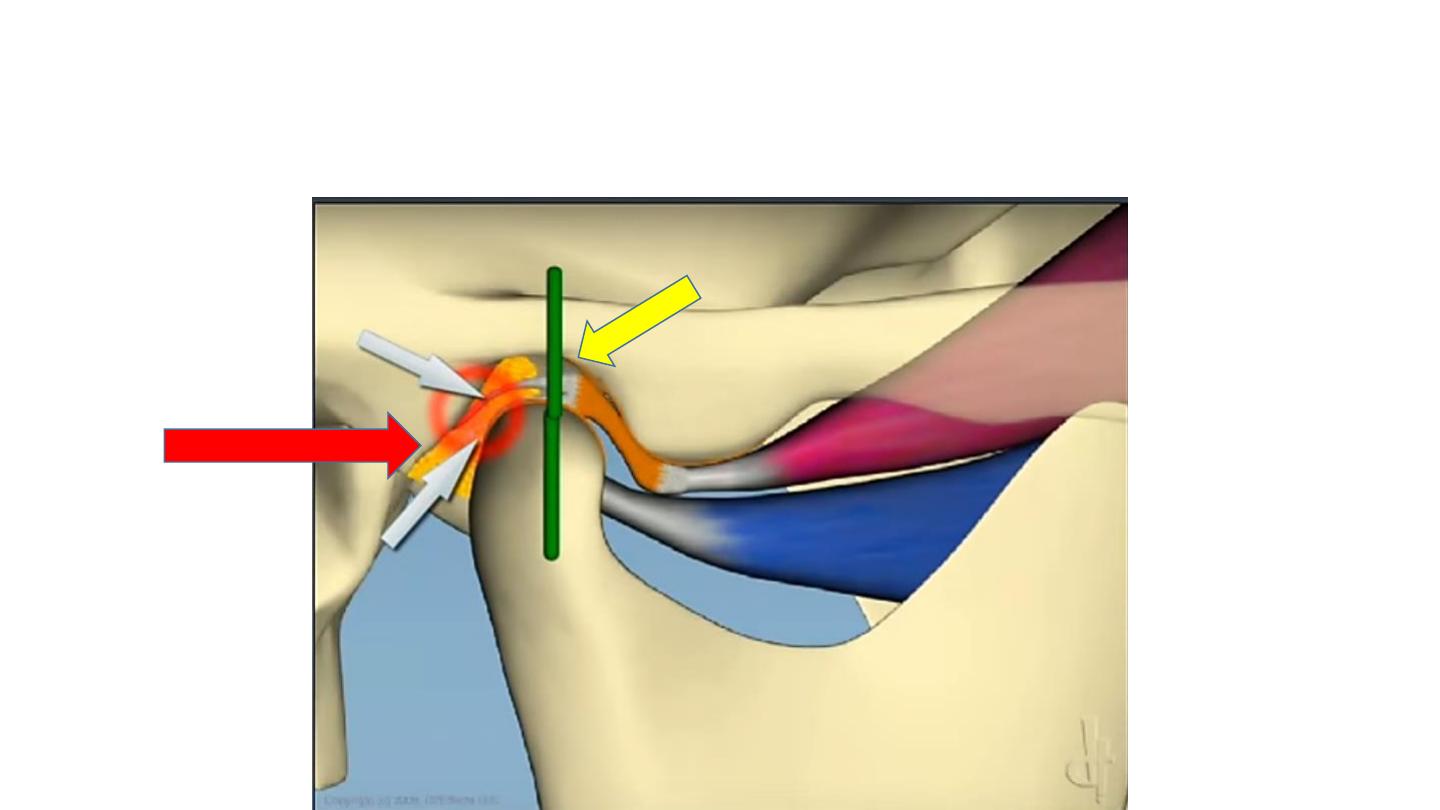
Pain
